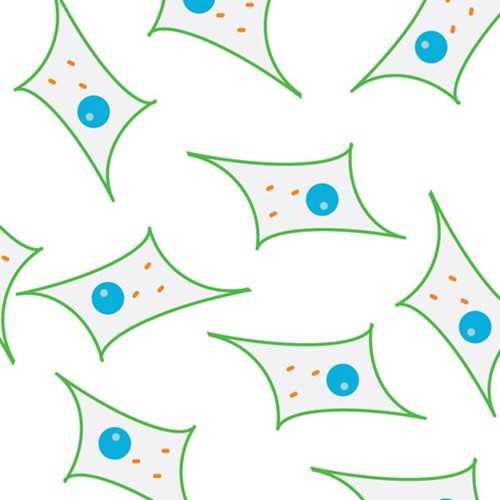4B6/3598/3442#2/4011C1 Cell Line
This murine fibroblast cell line is a derivative of the 4B6/3598/3442#2 Cell Line (Cat. ESA103). Unlike the parental cell line, these cells maintain mtDNA at normal levels. This was achieved by introducing into 4B6/3598/3442#2 cells of a LigA gene fused to an excisable (FRT/FLPo) mitochondrial targeting sequence (MTS) sequence from human ornithine transcarbamylase (rv4011). The resulting cells express two LigA variants: one without- and another with MTS. This latter (with MTS) variant is efficiently imported into mitochondria, and therefore normal mtDNA copy number is restored in the transduced cells.
From the laboratory of Mikhail F Alexeyev, PhD, University of South Alabama.
This murine fibroblast cell line is a derivative of the 4B6/3598/3442#2 Cell Line (Cat. ESA103). Unlike the parental cell line, these cells maintain mtDNA at normal levels. This was achieved by introducing into 4B6/3598/3442#2 cells of a LigA gene fused to an excisable (FRT/FLPo) mitochondrial targeting sequence (MTS) sequence from human ornithine transcarbamylase (rv4011). The resulting cells express two LigA variants: one without- and another with MTS. This latter (with MTS) variant is efficiently imported into mitochondria, and therefore normal mtDNA copy number is restored in the transduced cells.
From the laboratory of Mikhail F Alexeyev, PhD, University of South Alabama.
| Product Type: | Cell Line |
| Cell Type: | Embryonic fibroblasts |
| Source: | Mouse E13.5 Embryo |
| Organism: | Mouse |
| Morphology: | Spindle-shaped at confluence |
| Biosafety Level: | BSL 1 |
| Subculturing: | Split 1:4 to 1:8 every 3 days |
| Growth Conditions: | DMEM/10% FBS. Periodic selection with 10 µg/ml blasticidin, 2 µg/ml puromycin, and 1 mg/ml G418 |
| Cryopreservation: | Media + 10% DMSO |
| Comments: | Fast Growing |
| Storage: | LN2 |
| Shipped: | Dry Ice |
- Spadafora D, Kozhukhar N, Alexeyev MF. Presequence-Independent Mitochondrial Import of DNA Ligase Facilitates Establishment of Cell Lines with Reduced mtDNA Copy Number. PLoS One. 2016 Mar 31;11(3):e0152705.
If you publish research with this product, please let us know so we can cite your paper.


